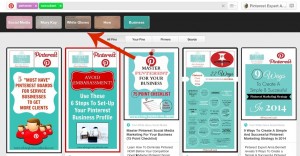
The one-on-one meeting is, in my opinion, the most important tool you have as a manager.
It’s the best way for managers and their employees to discuss issues, develop a relationship, and make sure an employee’s goals are being met.
In this guide, I’ll break down everything you need to know about the one-on-one and I’ll give you some helpful tools to use.
First, some background, what exactly is a one-on-one and why do you need them?
A one-on-one is exactly what its name sounds like. An employee and their manager having a private, one-on-one discussion about whatever is on the employee’s mind.
An important thing to note: This is not a status update meeting. Don’t treat it as such. There are plenty of other opportunities to check up on work progress. This is a discussion to make sure the employee is happy.
The most important thing for a manager to do is to make the employee feel comfortable being open and honest with you.
Key Things To Know
- Once a month for 60 minutes with each of your employees
- Take notes!
- Have key questions prepared (more on this later)
- Listen more than you talk
- Don’t ask for status updates, ask about their happiness
From a high-level, here is how I would structure the one-on-one:
- 10 minutes: informal catch-up
- 20 minutes: employee’s concerns
- 20 minutes: your notes/comments
- 10 minutes: action planning
Tips For Managers
These types of meetings can be tough, especially for new managers if they have no idea how to handle this. Here are a few tips to make sure you’re having the most effective one-on-one.
Remember It’s The Employee’s Meeting
One of the most important tips is that it’s the employee’s meeting, not yours. While this might seem subtle, it’s important to change your frame of mind to focus on the employee.
The key to a good one-on-one meeting is the understanding that it is the employee’s meeting rather than the manager’s meeting. This is the free-form meeting for all the pressing issues, brilliant ideas and chronic frustrations that do not fit neatly into status reports, email and other less personal and intimate mechanisms. -Ben Horowitz
Write Everything Down
I can’t stress how important it is to be aggressively taking notes during your one-on-ones. The key reason for this is that at the next one-on-one, you should look back at your notes from the previous one and follow up.
Ask Employees For An Agenda 24 Hours Before
Ask employees to send you an agenda of what you guys should be talking about 24 hours before the meeting itself.
This is good for two reasons:
- It helps prepare the employee for the meeting
- It helps you guide the discussion
- It helps prepare the employee for the meeting
Send A Wrap-Up Email
After the meeting, send a summary email to employees with action items and next steps.
Jason Evanish, who has written a lot about one-on-ones sums up the follow up perfectly:
None of the things you talk about in one on ones matter if you don’t follow through and take action on them. These two questions will ensure you always follow through with the important things you discuss in your one on ones:
- What can I hold you accountable for next time we talk?
- What can I be accountable to you for the next time we talk?
- What can I hold you accountable for next time we talk?
If you and your team are brand new to one-on-ones, you can send them an email in advance explaining the process to them.
Here’s an email template you can feel free to use:
Hi Jacob,
I’m considering having monthly one on ones with you and the rest of the team. The purpose of these one one ones is to get more feedback from you and give you a place where we can talk about anything that’s on your mind.
I was thinking we could have our first one on Thursday, March 3rd at 11am. We should ideally then schedule them every first Thursday of the month at 11am, to make sure we never miss one.
If you have any questions, please let me know.
Thanks,
Dan
Tips For Employees
Since the meeting is all about the employee, it’s important that they understand how to best use the time. Here are a few tips that employees can use.
Remember That It’s Your Time
Don’t be scared to stop your manager if they try to ask about status updates.
Remember the purpose of this one-on-one is to get anything that’s bothering you off your chest, and to develop a closer relationship with your manager.
Use this time to ask those difficult questions or to share your wild ideas. This should be a safe space for informal discussion.
Come Prepared
Make sure to have a few key questions or key talking points ready to bring up.
The more you can remember how your last one-on-one went and follow up from that, the better it will be. As much as your manager should prepare for the meeting, it’s important for you to come prepared too.
Ask For Feedback
Take advantage of the fact that this is a safe, private conversation. Feel free to ask for some direct, honest feedback to help you get better.
Remember that over time, the one-on-one will become the best way to communicate with your manager.
Questions To Ask During One-On-Ones
Every now and then, you’ll need some questions to get the conversation started. Here are a few good examples of questions you can use.
- If you had one suggestion for us to improve, what would it be?
- What’s the #1 problem with our organization?
- What do you like the least about working here?
- If you were me, what changes would you make?
- What do you think is the least useful feature in our product?
- What’s the biggest marketing opportunity that we should be doing?
- Are you happy working here?
- What do you think are your 3 biggest strengths?
- What do you love about your job?
- What gets you upset at work?
- What part of your job would you like to do less of?
- What makes for a good day at work?
Do You Conduct One-On-Ones?
Any tips to share with us? Let us know in the comments below!
Business & Finance Articles on Business 2 Community(55)
Report Post






